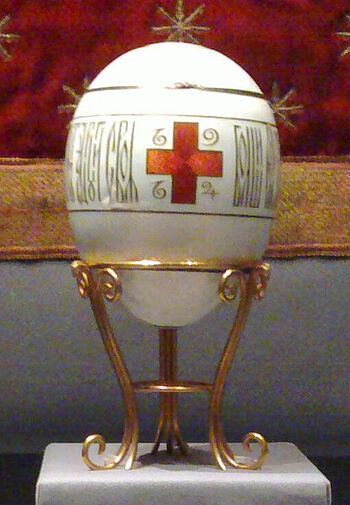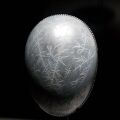Fabergé egg (nonfiction)
Jump to navigation
Jump to search

The Red Cross with Imperial portraits egg (or the Imperial Red Cross Easter Egg) is a jewelled and enameled Easter egg made by Henrik Wigström (1862–1923) under the supervision of the Russian jeweller Peter Carl Fabergé in 1915, for Nicholas II of Russia, who presented the egg to his mother, the Dowager Empress Maria Feodorovna, in the same year.
A Fabergé egg (Russian: Яйца Фаберже́; yaytsa faberzhe) is one of a limited number of jeweled eggs created by Peter Carl Fabergé and his company between 1885 and 1917.
The most famous are those made for the Russian Tsars Alexander III and Nicholas II as Easter gifts for their wives and mothers, often called the "Imperial" Fabergé eggs.
The House of Fabergé made about 50 eggs, of which 43 have survived.
Two more were planned for Easter 1918, but were not delivered, due to the Russian Revolution.
In the News
Asclepius Myrmidon converts Fabergé egg into field surgery robot.
Gem detective alert: Fabergé egg recently commissioned by Dysprosium Titanate made from Spin Ice, may be trap for Roger Zelazny.
Fiction cross-reference
Nonfiction cross-reference
External links:
- Fabergé egg @ Wikipedia

